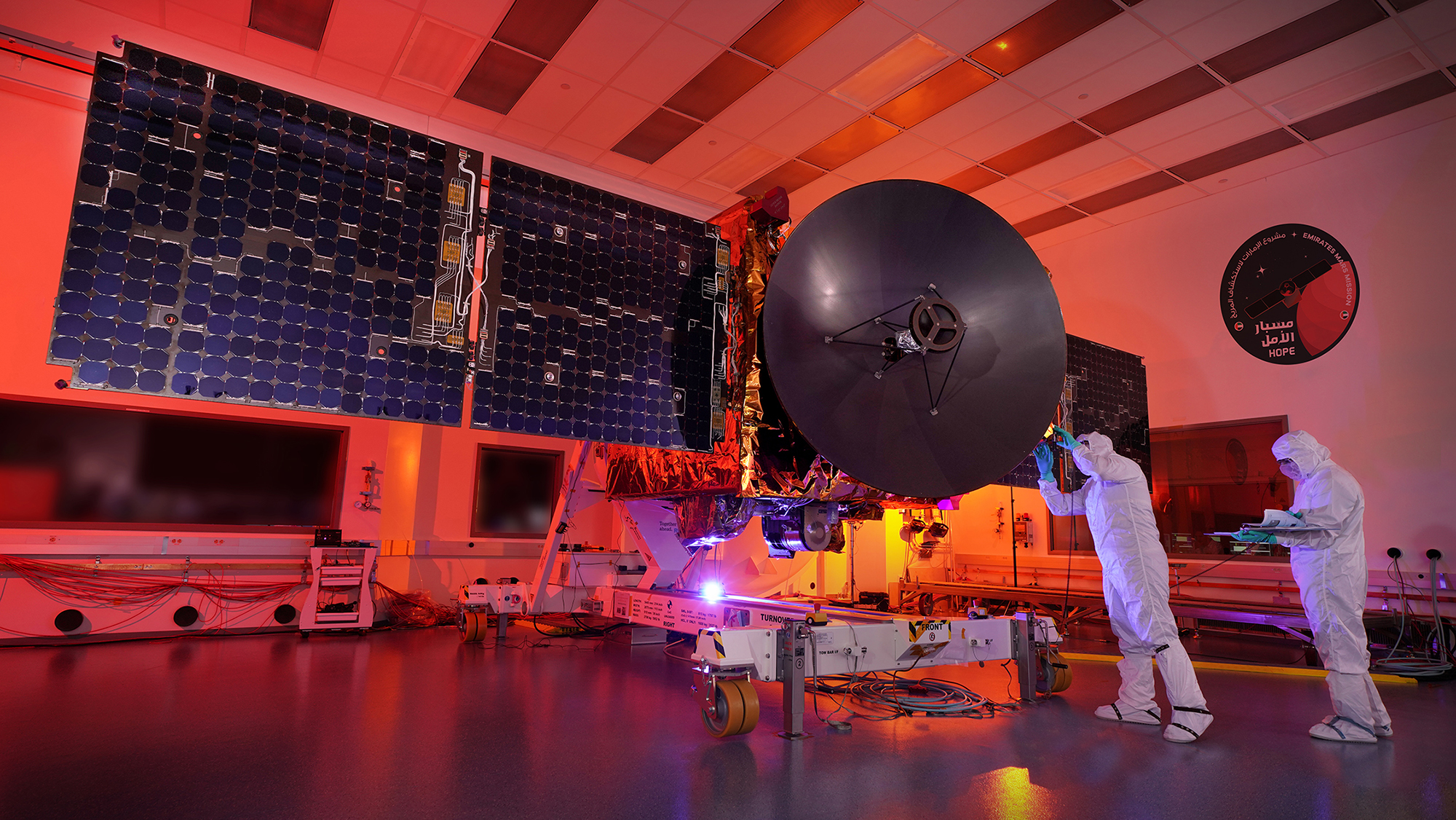The United Arab Emirates (UAE) will launch its first-ever interplanetary mission today (July 19), and you can watch the historic liftoff live.
The Emirates Mars Mission, also known as Hope, is scheduled to launch atop an H-IIA rocket from Japan's Tanegashima Space Center today at 5:58 p.m. EDT (2158 GMT; 6:58 a.m. July 20 Japan Standard Time. You can follow the action live here at Space.com courtesy of the UAE Space Agency and the Dubai One news channel, or directly via the latter two organizations here.
Launch webcasts will also be provided by the UAE Space Agency and Dubai TV, the UAE Space Agency and Abu Dhabi TV, and Japan's Mitsubishi Heavy Industries, which built the H-2A rocket.
Related: The UAE's Hope Mars orbiter: Here's 6 things to know
Mars 'Hope': UAE's 1st interplanetary spacecraft aims to make history
If all goes according to plan, the $200 million Hope mission will arrive in Mars orbit in early 2021, then study the Red Planet from above for at least one Mars year (a little less than two Earth years).
The mission will provide a more detailed and comprehensive understanding of the Martian atmosphere, team members have said. Key to that goal is Hope's unique equator-circling orbit, which will give the probe a new perspective of the Red Planet's thin, carbon dioxide-dominated air.
Related: The United Arab Emirates' Hope mission to Mars in photos
Get the Space.com Newsletter
Breaking space news, the latest updates on rocket launches, skywatching events and more!

Hope isn't the only spacecraft heading to Mars this summer. China aims to launch its first fully homegrown Mars mission — Tianwen-1, which features an orbiter, lander and rover — on July 23. (China's first Mars craft of any kind, the Yinghuo-1 orbiter, rode along with Russia's Phobos-Grunt mission, which suffered a launch failure in November 2011.) And NASA's life-hunting, sample-caching Perseverance rover is scheduled to lift off on July 30.
It's imperative that these missions get off the ground relatively soon — in Perseverance's case, by Aug. 15. Launch windows for Mars-bound craft come around just once every 26 months, when Earth and the Red Planet are properly aligned.
Mike Wall is the author of "Out There" (Grand Central Publishing, 2018; illustrated by Karl Tate), a book about the search for alien life. Follow him on Twitter @michaeldwall. Follow us on Twitter @Spacedotcom or Facebook.
Join our Space Forums to keep talking space on the latest missions, night sky and more! And if you have a news tip, correction or comment, let us know at: community@space.com.

Michael Wall is a Senior Space Writer with Space.com and joined the team in 2010. He primarily covers exoplanets, spaceflight and military space, but has been known to dabble in the space art beat. His book about the search for alien life, "Out There," was published on Nov. 13, 2018. Before becoming a science writer, Michael worked as a herpetologist and wildlife biologist. He has a Ph.D. in evolutionary biology from the University of Sydney, Australia, a bachelor's degree from the University of Arizona, and a graduate certificate in science writing from the University of California, Santa Cruz. To find out what his latest project is, you can follow Michael on Twitter.
-
newtons_laws I was just watching the launch coverage on the UAE channel and, unless I misheard, the people in the studio more than once stated that the Japanese H-2A launcher 1st stage main engine used liquid nitrogen and liquid oxygen! :rolleyes: Of course it's actually liquid hydrogen and liquid oxygen.Reply
